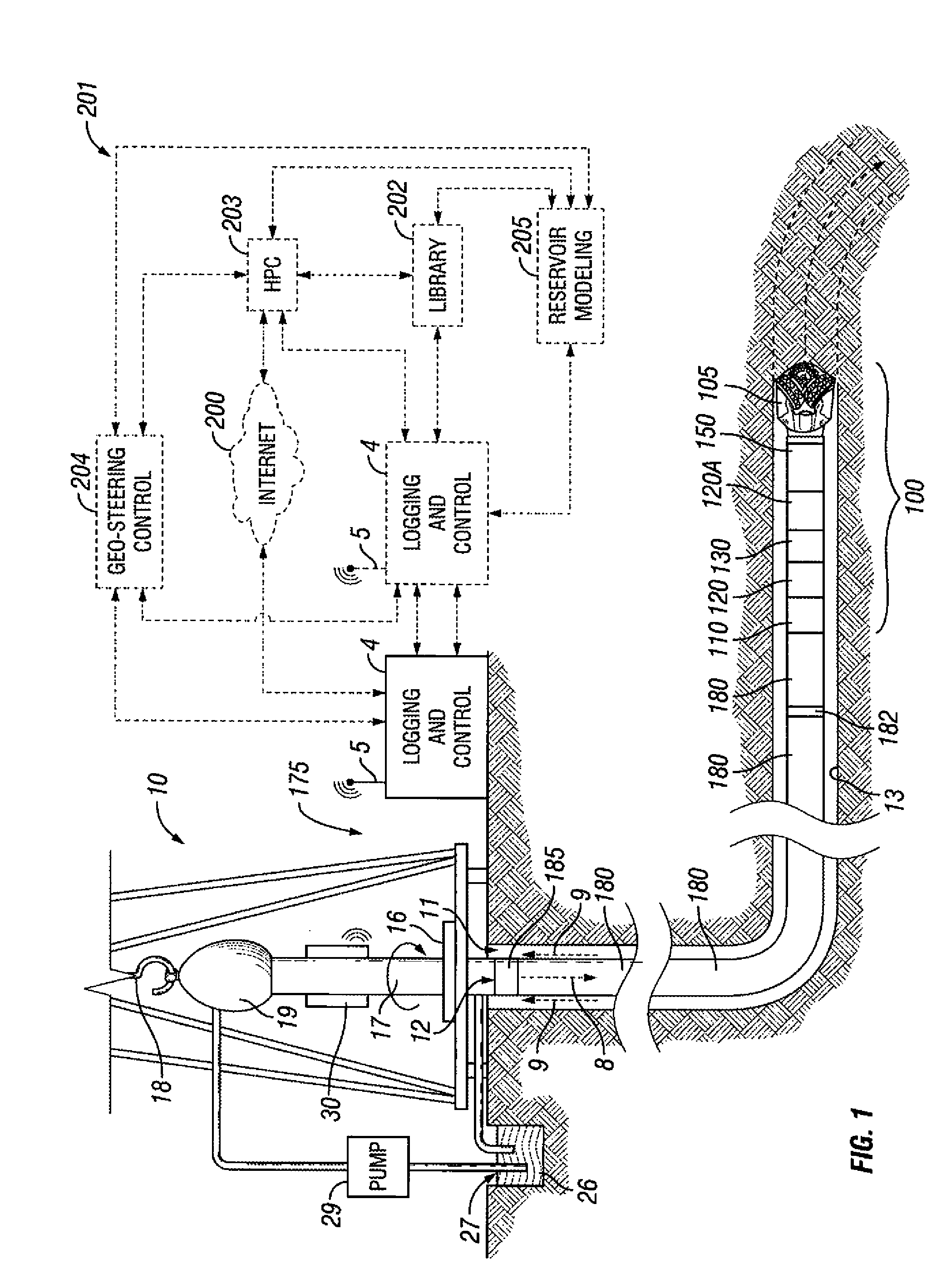Formation modeling while drilling for enhanced high angle for horizontal well placement
- Summary
- Abstract
- Description
- Claims
- Application Information
AI Technical Summary
Benefits of technology
Problems solved by technology
Method used
Image
Examples
first embodiment
[0053]In a first embodiment, a disclosed technique starts with a seismic reservoir model in PETREL™ software used for while drilling visualization of well path in reservoir 3D structure, as well as visualization and integration of all measurement and drilling data. Then, a section of the reservoir model is extracted for a given well trajectory 208 and that is the depth of investigation of the tool or tools 120, 130, 120A. Tool response modeling is performed for a given interval of the wellbore trajectory 208. A “domain of interest” or an area of interest of the model is identified where statistical uncertainty is high between tool response modeling and the initial reservoir model. Possible changes in the model are identified that are not present in the original reservoir model, such as borehole fluid invasion effects, including the shape of the borehole, invasion profile, anisotropy, cross-bedding, sub-seismic faults, etc. Various parameters are assigned to the area of interest incl...
second embodiment
[0055]In a second embodiment, a model update feature is based on 2D / 3D forward modeling. In this embodiment, an existing (e.g. seismic) reservoir model in PETREL™ is used. Then, a section of the reservoir model for a given well trajectory that is also defined by the tool depth of investigation is extracted. The extracted model may be in the form of curtain section for 2D model, a Pillar grid for a 3D models, or a general corner point grid. Tool response modeling is performed for a given interval of the trajectory. A “domain of interest” or an area of interest is identified for part of the model from that needs refinement, i.e. where there is mismatch between modeled data and tool measurements. Potential geologically feasible models are identified that may be appropriate for the given area of interest. Parameters for the area of interest are identified and defined. Such parameters include, but are not limited to: parameters relating to nearby boundaries including position, their dip ...
fourth embodiment
[0059]In the fourth embodiment, a combination of well placement tools may be employed such as an azimuthal resistivity imaging tool (e.g., Schlumberger's GEOVISION™ resistivity imaging tools or resistivity at the bit (RAB) tools) and curtain section imaging tools (e.g., Schlumberger's PERISCOPE™ deep imaging resistivity tools). The multiple tool responses are used to refine the reservoir models.
PUM
 Login to View More
Login to View More Abstract
Description
Claims
Application Information
 Login to View More
Login to View More - R&D
- Intellectual Property
- Life Sciences
- Materials
- Tech Scout
- Unparalleled Data Quality
- Higher Quality Content
- 60% Fewer Hallucinations
Browse by: Latest US Patents, China's latest patents, Technical Efficacy Thesaurus, Application Domain, Technology Topic, Popular Technical Reports.
© 2025 PatSnap. All rights reserved.Legal|Privacy policy|Modern Slavery Act Transparency Statement|Sitemap|About US| Contact US: help@patsnap.com



